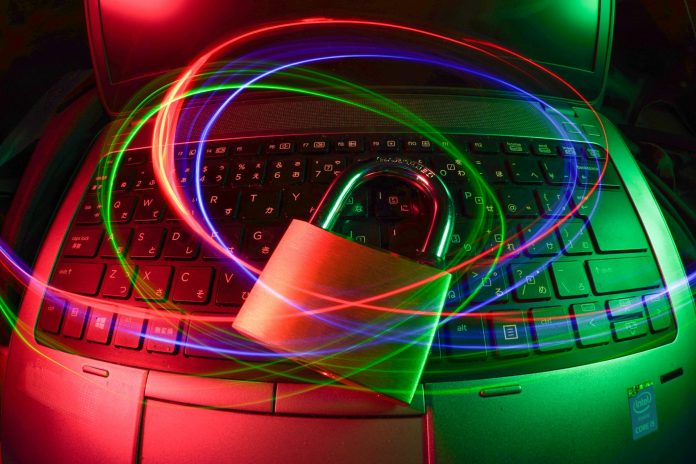This post will reveal the hidden threats in Edtech and show you what teachers need to know about classroom cybersecurity.
Technology is now a big part of classrooms, with the EdTech market becoming a multi-billion-dollar sector. Digital platforms make learning more interactive. It’s also easier to track student progress and get access to resources.
However, behind this convenience is a concern: cybersecurity issues. Teachers are now responsible for their students’ digital safety, as a single weak password or phishing email can jeopardize an entire school network. Let’s learn about the potential threats in EdTech and how you can deal with them.
Table of Contents
The Occurrence of Cyber Threats in Education
Previously, schools were just learning environments. Now, they are also mini data centers that hold sensitive student information, such as names, grades, medical details, and (at times) family financial records.
Cybercriminals know this. Over the past few years, ransomware and phishing attacks on schools have grown dramatically. Corporations typically have dedicated IT security teams to protect the company’s sensitive information. In contrast, most schools operate with limited cybersecurity infrastructure.
A single compromised account can lead to data theft or system shutdowns. Besides being technical, the problem is also human. Many teachers and administrators still underestimate the ease with which they can be targeted. A harmless-looking email link or even an online quiz can serve as a gateway for hackers.
Common Cybersecurity Gaps in the Classroom
Technology can only protect a system when used responsibly. Unfortunately, several habits and practices make classrooms easy targets. These include:
- Weak passwords: Teachers often reuse passwords across multiple platforms for convenience. Hackers exploit this through credential-stuffing attacks.
- Unverified software: Downloading unapproved tools for lesson plans or online grading exposes systems to malware.
- Inadequate Wi-Fi security: Public or shared networks are breeding grounds for cyber intrusions.
- Unsecured student devices: Tablets and laptops used at home can also carry infected files back to school networks.
- Outdated software: Teachers and students who skip updates leave the systems open to exploits that attackers already know how to use.
These cybersecurity lapses in education pose a risk to digital data and disrupt learning. In worst-case scenarios, they may lead to breaches that can expose student data to unauthorized access and cause reputational damage to the school.
How Can Teachers Improve Classroom Cybersecurity?
Every teacher in an EdTech environment plays a role in digital defense. Cybersecurity may sound technical, but it also comes down to habits and awareness. Teachers should know how to spot suspicious activity and model responsible online behavior for students. For example, if a student receives a strange file via email, it’s an opportunity for the teacher to discuss phishing and why attachments from unknown senders are risky.
Similarly, when software updates appear during class prep, you should treat them as important maintenance tasks, and not interruptions. Teachers should also encourage students to use secure passwords.
More importantly, they should check with the school before installing any new software, and only use authorized tools. Many free online platforms collect data in the background or hide malicious code.
Training sessions can be quite helpful in this regard. For example, short, scenario-based lessons can help staff recognize the signs of cyber threats. The same practices can also be used to address the cybersecurity risks presented by remote learning, where the chance of cyber intrusions is higher.
The Cost of Neglecting Classroom Cybersecurity
Cybersecurity is just as important in the field of education as it is in an enterprise or technical institute. A single attack can cost the school thousands of dollars and weeks of downtime. In several cases, districts may be forced to shut down entire systems to contain breaches.
Besides financial losses, such incidents expose student identities, which can lead to long-term privacy issues; the impact doesn’t stop there. Teachers can also lose access to lesson plans. Students may be unable to submit assignments, and parents lose faith in the institution’s ability to protect their children’s information.
How to Link Cybersecurity With Classroom Management
Strong classroom management strategies go hand in hand with cybersecurity. A well-organized digital environment can help reduce risky behavior. Here’s how to implement it:
- Establish clear rules about device use during class.
- Designate specific times for online activities to monitor student behavior.
- Utilize secure learning management systems instead of relying on random apps or websites.
- Use school-approved communication platforms instead of personal messaging apps.
- Change all default passwords on digital devices and online accounts to increase security.
- Share cybersecurity tips with students and hold regular refreshers.
- Encourage students to report technical issues instead of attempting to fix them on their own.
These practices can help classrooms run more smoothly while reducing the risk of cyber incidents.
Endnote
Since we live in the digital age, there’s a need for us to be more vigilant. That includes being aware of best cybersecurity practices and conveying them to the students as well.
Cybersecurity works best when it becomes an integral part of your classroom’s culture, rather than a technical add-on. Teachers have to set the tone, and students follow suit, so even if you start small, start today.
INTERESTING POSTS
About the Author:
Meet Angela Daniel, an esteemed cybersecurity expert and the Associate Editor at SecureBlitz. With a profound understanding of the digital security landscape, Angela is dedicated to sharing her wealth of knowledge with readers. Her insightful articles delve into the intricacies of cybersecurity, offering a beacon of understanding in the ever-evolving realm of online safety.
Angela's expertise is grounded in a passion for staying at the forefront of emerging threats and protective measures. Her commitment to empowering individuals and organizations with the tools and insights to safeguard their digital presence is unwavering.










